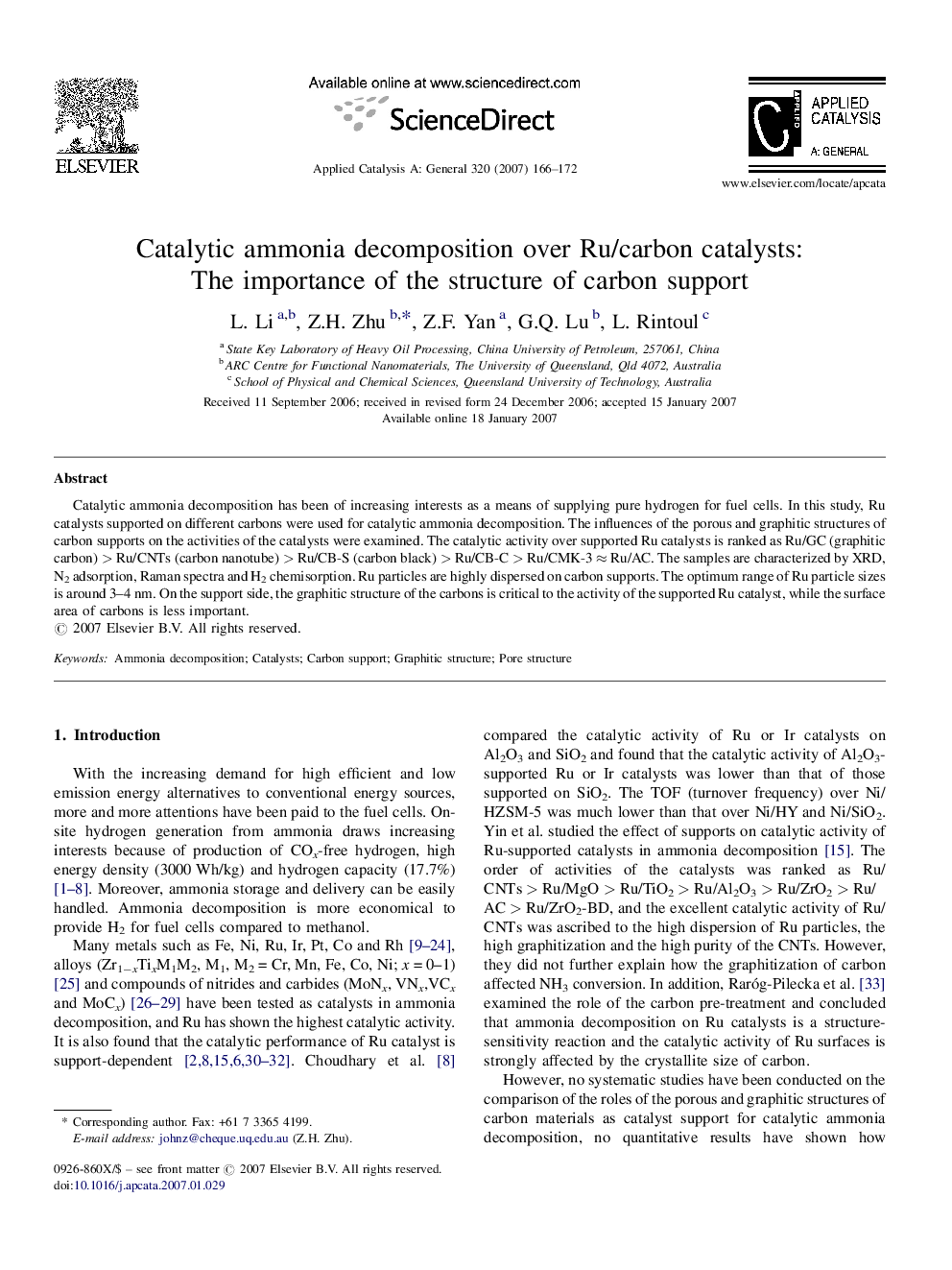| کد مقاله | کد نشریه | سال انتشار | مقاله انگلیسی | نسخه تمام متن |
|---|---|---|---|---|
| 44431 | 46025 | 2007 | 7 صفحه PDF | دانلود رایگان |

Catalytic ammonia decomposition has been of increasing interests as a means of supplying pure hydrogen for fuel cells. In this study, Ru catalysts supported on different carbons were used for catalytic ammonia decomposition. The influences of the porous and graphitic structures of carbon supports on the activities of the catalysts were examined. The catalytic activity over supported Ru catalysts is ranked as Ru/GC (graphitic carbon) > Ru/CNTs (carbon nanotube) > Ru/CB-S (carbon black) > Ru/CB-C > Ru/CMK-3 ≈ Ru/AC. The samples are characterized by XRD, N2 adsorption, Raman spectra and H2 chemisorption. Ru particles are highly dispersed on carbon supports. The optimum range of Ru particle sizes is around 3–4 nm. On the support side, the graphitic structure of the carbons is critical to the activity of the supported Ru catalyst, while the surface area of carbons is less important.
In this study, Ru catalysts supported on different carbons were used for ammonia catalytic decomposition. Ru particles are highly dispersed on carbon materials, the surface area of carbons is not a critical factor in the ammonia decomposition, and the graphitic structure of carbon supports is a key issue for high catalytic performance in the NH3 decomposition process.Figure optionsDownload as PowerPoint slide
Journal: Applied Catalysis A: General - Volume 320, 22 March 2007, Pages 166–172